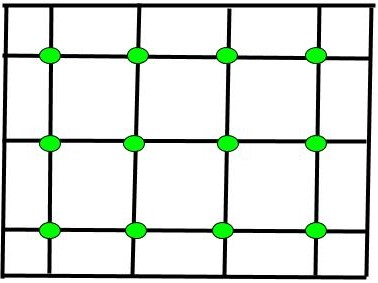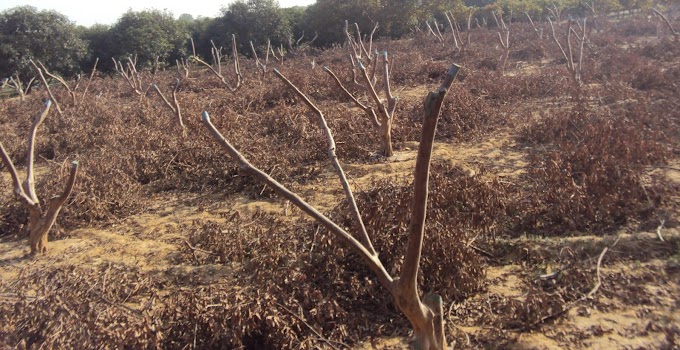Planting system: In high-density planting normally rectangular planting system is followed with single, double or three-row planting. In single row planting spacing within the row is less (2m) than spacing between the row (4m) .In double row planting a wider (4m) spacing is kept after every two rows at a normal spacing (2x2m) whereas in three row planting a wider spacing (4m) is given after every three rows at normal (2x2x2m) spacing.
Training and Pruning: In high density planting a specific ratio is maintained between tree high and width. Normally trees height is not allowed more than twice of its width or diameter at the base. The maximum numbers of fruiting branches are maintained with minimum numbers of structural branches. The branches are pruned and trained in such a way that each branch casts minimum shade effect on another branch. The apple trees are trained in dwarf pyramid system or cordon system or spindle bush system. In tatura trelling system, which has been developed in Australia, only two branches one in the east and other in the west are maintained with suitable crotch angle and rows are maintained in a north-south direction.
 |
| Pruning in High Density Guava Orchard |
Merits of HDP:
1. Better utilization of land, solar radiation and other resources.
2. Precocious bearing with a higher yield of better quality.
3. Early and higher returns.
4. Low labour cost.
5. Easy to use modern orchard management techniques such as drip irrigation, mechanization, and fertigation.
6. Best alternative to increasing production under shrinking land resource conditions.
Demerits of HDP:
1. Less life span of the fruit.
2. Needs of high managerial skill.
3. High-density orchards are more conducive for pests and diseases.








